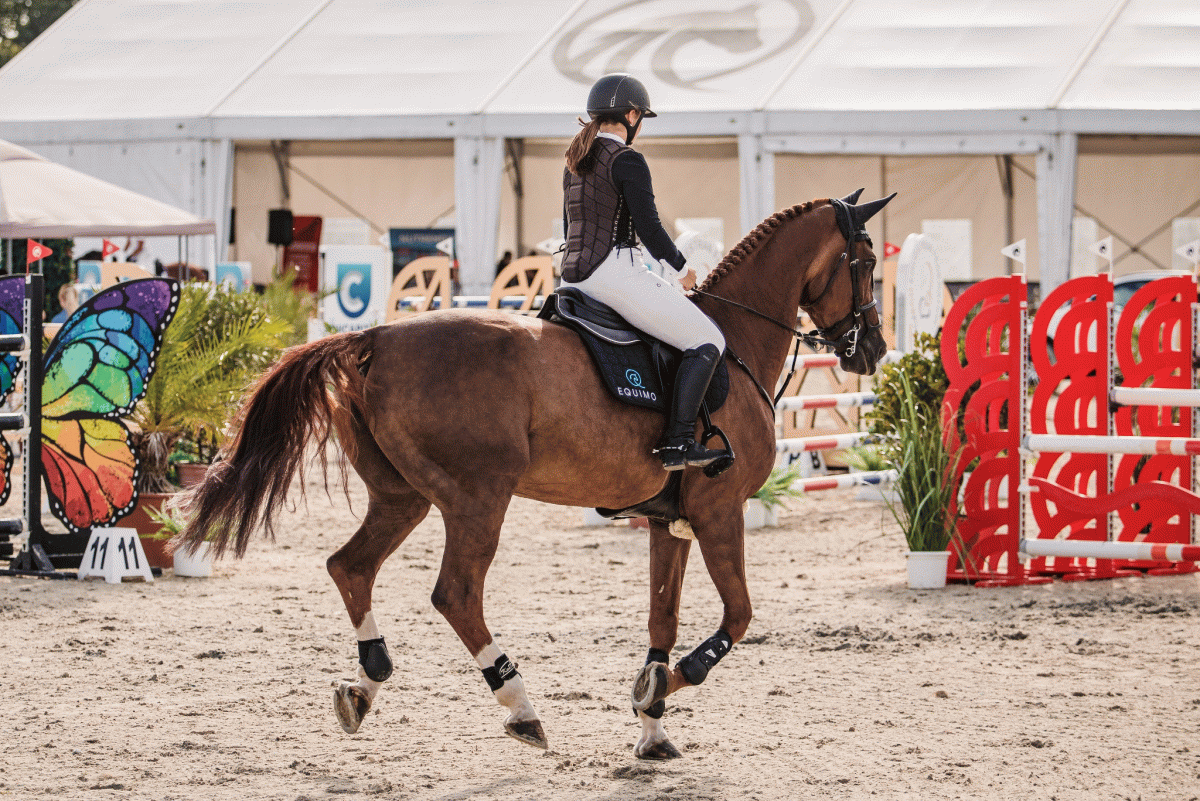
We often hear trainers and coaches shouting at their pupils, "Find the right tempo!" in the warm-up ring. As simple as this advice is, the actual performance proves to be everything but easy. All the showjumpers (and many other riders) know about the mysterious "perfect tempo" that gives the horse an ideal momentum to jump. But how to achieve it?
Let’s see how EQUIMO can help you work with the tempo. But first, we need to learn a bit more about the issue.The tempo is the speed of motion or activity, and we use two different units to describe it. Meters per minute is a unit widely used in course plans and other technical issues. However, strides per minute is the unit used for working with tempo, and it is also the unit we currently use in our tempo graphics. In this unit's context, walk varies between 35 – 60, trot between 55 – 100, and canter between 80 and 130 strides per minute. The more extended a gait is, the more steps per minute in the analysis (and the higher your curve).
Almost perfectly even tempo in trot without any extensions of collections.
The more extended a gait is, the higher your curve. Here, you can see a series of minor extensions in canter.
Extensions and collections give you an option to adjust your stride, along with a particular awareness of a gait. If you teach your horse to extend or collect a gait within 5 spm, it gives you a range of 10 spm to work within; a fairly big range. You can watch your extensions and collections in numbers in your tempo graphics, evaluate your performance, and watch your progress there. However, keep in mind that the physiology of your horse plays an important part here. Going from a standard 55 up to 60 spm is easy for a Baroque horse but more difficult for a Warmblood. On the other hand, going from 55 spm to 50 spm is easy for a Warmblood but more difficult for a Baroque horse.
An important number to remember for a showjumper is 110 spm. It is the tempo of an average Grand Prix (or the "perfect tempo" for a Grand Prix round, you could say). This number decreases with smaller jumps (and an indoor arena also makes a difference), but it is a value to follow while looking for your perfect pace.
The tempo of this 1.20 round indoors is approximately 100 spm (straids per minute).
The first indicator of the tempo you should be following is the feeling. Does it feel right? Do you see the distances? Is your horse happy at this particular pace? Is your trainer satisfied with your performance? If so, study your analysis after the session and see the tempo your tracker has measured. Then try to duplicate it during the next session. The Equitronome function might help you here, as its sound signal can guide you towards the desired pace as you ride. Nevertheless, keep in mind that with higher jumps, your tempo will also be faster, so the ideal pace differs among levels.
The Equitronome function may help you in reaching and keeping the desired pace.
No skill with horses comes easy, but with persistence and repetition, you will undoubtedly soon be able to pull off your "perfect tempo" anytime and anywhere you need it!